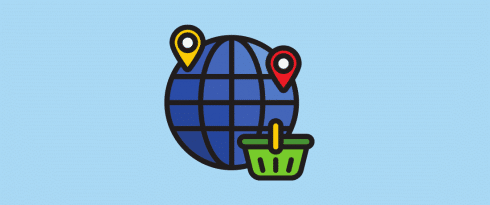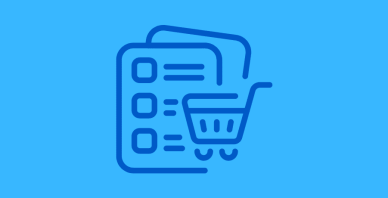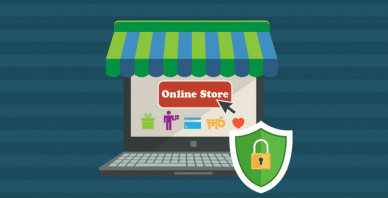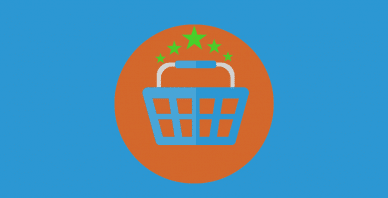Table of Contents
Last update on
Worth an astonishing $3.5 trillion USD in 2019, the global eCommerce industry is not only a lucrative field – but also one in plain growth. In fact, by 2023 e-Marketer predicted the industry to be valued at over $6.5 trillion USD by 2023, accounting for a sizable 22% of global retail sales.
What’s more, recent developments spurred by the pandemic actually allude to an industry far more prosperous and rapidly growing than initially thought. As noted by Forbes, eCommerce businesses should thrive under current circumstances as customers worldwide shift their behaviour towards purchasing online to avoid physical shopping environments. Furthermore, recent data from IBM’s US Retail Index suggests that the pandemic has accelerated the shift from physical to digital retail environments by 5 years.
So, while much uncertainty surrounds the world today, one thing that’s for sure is the need for businesses to capitalize on their eCommerce platforms for future success and growth.
And, once you’ve decided to start selling internationally, there are a few extra considerations you’ll need to put in place to ensure you’ll be found by your new markets. Fortunately, in this article we’re going to take you through the steps you should take to ensure your own eCommerce store is international SEO ready.
What is international SEO?
First up, if you’re wondering what international or multilingual SEO is, fear not. Chances are, you already have a good understanding of what regular SEO is, and international SEO is a simple extension of this.
In essence, international SEO involves applying the same best practices and principles of domestic level SEO, except this time – in multiple languages. While it may be an intimidating consideration at first glance, getting international SEO right can bring with it a multitude of benefits.
Benefits of international SEO
Ranking highly on international SERPS
One of the biggest benefits of taking care of your international SEO is the benefits you’ll see on international search engine result pages. If you’ve only carried out your SEO efforts in English, the chances are your website won’t rank highly on foreign search engines where web users are searching in different languages, such as French or German. However, when your content is translated, indexed, and optimized in the new target language you’ll notice a huge improvement in your ranking on these search engine result pages.
Higher traffic and more sales
By extension of the last point, the higher your rank on search engine result pages – the more traffic your website will get. In fact, in recent years the first page of search engine results has accounted for up to 92% of overall traffic, further accentuating the need to get international SEO right. And when more people are clicking into your site, the deduction is quite simple – you’ll see a positive impact on your sales and overall growth.
The first part of ensuring your eCommerce store is set up for international SEO is to actually translate it.
1. Language
The need for this becomes all the more apparent when we consider recent research from Nimdzi Insights which shows that 9/10 global users ignore a product if it’s not in their native language.
With this considered, and the fact that only a quarter of internet users are native English speakers – what’s clear is that eCommerce businesses with a growth mindset will need to think beyond a monolingual site.
Choosing the right multilingual plugin
While creating a multilingual website can seem like a daunting prospect, it’s the cornerstone of successful website localization and is well worth the investment. In fact, the Localization Industry Standards Association (LISA) released a study showing that on average every €1 spent on localizing your website yields €25 in return.
Of course, there’s the additional question of how to translate your site into multiple languages and how long this will take. Fortunately, there are innovative multilingual plugins on the market that can help you with this. One such plugin is Weglot, which is already trusted by over 50,000.
When choosing the right multilingual plugin there are some features you should bear in mind:
Ease of installation
For many looking to translate their eCommerce store, selecting a plugin that’s easy to install and requires very little effort is always going to be advantageous.
Translation Capabilities
Facing the prospect of translating sometimes thousands of product titles and descriptions, the idea of doing this manually can be daunting. That’s why it’s a good idea to choose a multilingual plugin that provides a first layer of machine translation. Plugins like Weglot offer such capabilities and then allow you to edit those translations manually or by ordering professional translators.
Automated translation saves you both time and money and post editing features mean you can control your translation quality.
Media Translation
It’s not just the words on your eCommerce website you need to be mindful of – translating images, videos and other media files ensures you’re following website localization best practices.
Visual Editor
Selecting a multilingual plugin that also allows you to edit in a live preview of your website not only allows you to see exactly where your translations are in context but also helps you see if you need to make any design changes due to text expansion.
Multilingual SEO
Metadata translation, language subdirectories and hreflang tags are all vital elements helping you get ranked on international search results. Choosing a multilingual plugin that also takes care of these aspects will mean less work for you.
2. The basics of international SEO
Translating content and keywords
As a starting point, one of the most important things to do is to translate the entirety of your site’s content into the target language. This includes keywords which are crucial for optimizing your search engine potential. Not only will all of this make your customers in foreign markets feel appreciated, but will also greatly improve your search engine ranking.
Metadata translation
If you’ve been doing domestic level SEO right, you’re probably already aware of the importance of your meta title and meta descriptions. These components of your site are stacked with information and keywords that help search engine bots understand the content in your pages. They also serve as snippets or previews which encourage web browsers to click on your page.
To rank highly on international search engine pages and optimize your own eCommerce store, it’s absolutely essential to translate these titles and descriptions. Check out above how Amazon have translated their metadata for their French customers.
URL structure
When setting out to conquer international SEO, another crucial tip to success is get your URL structuring right, as this can have a significant bearing on rankings. A common misconception is that it’s necessary to set up country specific domains when expanding into new language markets. An example of such would be something like www.myecommercestore.fr .
However, when doing so you also need to think about the cost of running multiple domains and building domain authority for each website. In fact, Google best practices on international SEO suggests that setting up a dedicated URL for each language version of your site can be a better option.
An example of such would be to use subdirectories or subdomains.
Subdirectories: Which look like www.myecommercestore.com/fr/
Subdomains: Which look like fr.myecommercestore.com
Both subdomains and directories are advantageous because it involves paying for only one domain, they’re also really well received by Google when it comes to search engine rankings!
Hreflang tags
A closing tip to master international SEO and optimize your search traffic is to apply hreflang tags. Basically, what these tags do is specify the language and geographic targeting of a given webpage. The combination of these two factors means that search engines can better deliver to web browsers pages in their language and pages targeted to their specific region – making it an extremely effective SEO tool.
However, as stated by Google’s own John Muller, hreflang tags can quickly become a very complicated aspect of SEO. You can check out the hreflang guide which discusses ways to implement your own tags. However, you’re most likely better off using a localization solution such as Weglot that automatically takes care of implementing Hreflang tags for you.
3. Site speed
One of the first things you’ll need to consider when optimizing your website is the speed of your site. While this may seem pedantic, the loading time of your pages can actually have a huge impact on purchasing behaviour.
In fact, 51% of online shoppers in the USA described site slowness as their top reason for abandoning a purchase. Among their UK counterparts, this was the top reason for purchase abandonment by 67% of shoppers.
What’s more, even a 1 second delay in your sites loading time can impact in the following way:
- A 7% reduction in conversion rate
- An 11% reduction in page views
- A 16% reduction in customer satisfaction
Importance of optimizing images
The first tip to improving your site speed is to optimize any images on your site. If you’re wondering why, basically the heavier your webpages are – the longer they take to load. Heavy images can be one of the biggest detriments to your site loading speed and so, need to be addressed.
The solution to this of course, is to make your images lighter. However, in a lot of instances, making images lighter affects the resolution and subsequent quality of the images on your webpage. There’s also the additional consideration of manually optimizing each image on your site, which would be an undoubtedly tedious endeavour.
Fortunately, there are a number of image optimization solutions available which can take the heavy-lifting out of what can quickly become a complicated task. Tools such as Imagify can manually optimize your images without compromising image quality, not only speeding up your site load time, but also saving you a lot of time.
Importance of a cache plugin
The second top tip for increasing your site speed is to get your website a cache plugin. For those of you unfamiliar with caching, essentially what it does is make your website really fast!
To give a little more information on what exactly caching is, it’s helpful to consider the Merriam-Webster definition of caching which defines it as the “short-term computer memory where information is stored for easy retrieval”.
Basically, what caching does is store some frequently accessed data in a “cache” so that when a web browser visits your website it will load faster in subsequent visits! Sounds pretty practical, right? Of course, there’s a tad more to caching than that and you have a multitude of caching options available.
Technicalities aside, what’s important to know is that a cache plugin can be a great addition to your site. If you’re running a WordPress built website, the WP Rocket cache plugin can seamlessly integrate with your site and make your website faster in just a few clicks.
Wrapping Up
With ecommerce on the rise now more than ever, it’s important that you’ve taken every step to ensure your international SEO is fully optimized for your own ecommerce store, so you can take advantage of this growth opportunity. Fortunately, a number of small steps can make a huge difference, in terms of not only growth, but also user experience.
Here’s a recap of some top tips to apply:
1. Add more languages
Not everyone speaks English, and if you want success in foreign language markets you’ll need to go multilingual.
2. Take care of the basics of multilingual SEO
A little goes a long way – translate your metadata, optimize your URL structure, and don’t forget about the dreaded hreflang tags!
3. Improve your site speed
The addition of a cache plugin and optimizing your images makes a real difference to site speed. The quicker your site loads the more likely visitors are to spend time on your eCommerce store which signals to search engines that you have relevant content.
Once you’ve taken care of the above, you’ll be well along your way to heightened eCommerce success, in both your domestic and international markets. So, what are you waiting for?



